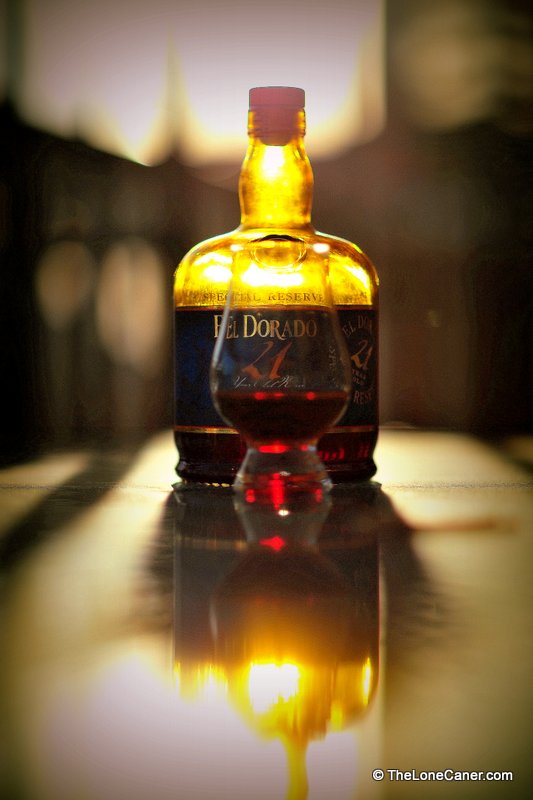More than ever it has become clear that DDL has found a way to fold special editions into its core El Dorado range. I had remarked in the video review of the PM 2009 12 YO that until relatively recently, special limited bottlings did not get much attention from the company, or the public: the Rare Editions which replaced Velier’s iconic Demeraras did not always get serious traction, consumers did not cotton on to the “Colours” quartet, and the 15 YO and 12 YO wine-finished releases were at best modest sellers.
Yet to have cask strength limited editions that showcased the heritage stills had to have been seen as the path forward in the drive to premiumization. And by the early 2020s, we began to see El Dorado rums popping up on the shelves and being touted at rumfests. They were stronger than the norm, remaining in the 12-16 year age range, and showcasing (for the most part) the heritage stills. It did, however, remain the province of the independents to issue truly esoteric marques (not just PM, VSG, EHP or ICBU) like AN, KFM or SWR.
Until, that is, this one came on the scene in 2024.
In one fell swoop DDL tried to marry an almost unknown marque with a high ester rum. Previously high ester spirit had just been pushed into the major aged blends, though any Guyanese would know that the Superior High Wine (which was only sold locally) was mostly from that little-known small still. And LBI (La Bonne Intention – it’s an estate on the East Coast of the Demerara) is enormously obscure, with only a couple of Velier releases from The Age (1985 and 1998 vintages) and a very occasional indie like Nobilis or Nectar of the Daily Drams ever demonstrating the style. As you can imagine, the geek crowd went slightly ape when this came on the scene.
Now for the trivia nuts, permit me a small digression: LBI had a distillery since the 1800s, and a rum from there was judged at the Calcutta International Exhibition back in 1883. Rum continued to be produced until at least 1959, and sometime in the early 1960s distillation was rationalised by Bookers into Uitvlugt (along with several others), with the distillation apparatus that could not be used being mostly scrapped. The distillate in this release must therefore have been put together on a currently existing still, based on stored production records since no still remains in existence from the original estate.
Enough background, then. Quick facts: French Savalle Still for the LBI part, 57% ABV, 12 years old, blended with a high ester rum from Diamond’s John Dore double-retort copper pot still (not the PM, which is of wood). Difford’s notes “in excess of 1500 g/hlpa” for the DHE component, which is unconfirmed elsewhere, but even so…ouch. We are not given details of the proportion of each…not that I expected any, but it would have been nice. Aged in ex bourbon for 12+ years, and that’s all we need. And of course, the question after all that is – what’s it like?
The nose is, in a word, outstanding. It comprises three major components. The first aromas one notices are the esters and congeners, those sweet acidic notes like gooseberries, bubble gum, strawberries and pineapple, with something like attar of roses in the background, and some burnt pimentos, balsamic vinegar and ginger. The second is a more pastry-like smell, of hot croissants daubed with salted butter, fresh from the oven, biscuits and damp sawdust, behind which can be sensed some leather, floor polish, linseed oil and glue. And after all that is said and done and you hang around for a while, you’ll get some sweet spices – cloves, cardamom, cinnamon and vanilla. There is a lot to be unpacked here and it rewards the patient.
The palate is simply strong and very firm, fortunately without any kind of bitchy sharpness. It’s more like a very hot very sweet and very strong black tea. There’s salt, honey, olive oil, brown sugar, salted caramel ice cream, orange peel, sweet soya, and then a repetition of the sweet spices, freshly baked pastries, coffee grounds and unsweetened chocolate…and more of the spices mentioned above. The rum as a whole presents as somewhat dry, but it all leads to a really long, dry, aromatic that sums up the profile quite nicely, but without introducing any new elements.
Well. I must say, I’m happy that this is not a rum which was twisted into some semblance of conformity by some moron’s idea of a formula. It’s quite original, while still hewing to a profile that is recognizably Demerara. To do so was probably the right decision, since, overall, the rum works extremely well. The high ester component is less assertive than the Jamaicans have led us to expect (that’s not a criticism, just an observation), yet it does well to balance off the more traditional flavours provided by the LBI, which, even back then, always seemed to be somewhat indeterminate. Honestly, because of the obscurity of the LBI marque and my interest in any DDL high ester rum, I would have preferred to see each released as an individual bottling. However, it is possible that the LBI distillate didn’t turn out to be anything spectacular, so a blending choice was made to marry the two and create something (possibly) better than either on its own.
I can only say that the final product is really quite good. It costs about a hundred dollars in Canada, so it won’t break the bank; and seems to have distribution in both Europe and the US, although unfortunately the outturn is unknown. For that strength, that nose, those tastes and the overall quality, there’s nothing here that I don’t like. My suggestion would be to park the high ester expectations, enjoy the complexity of the blend, appreciate the strength, and maybe even drop the coin to get one for yourself.
(#1089)(88/100) ⭐⭐⭐⭐
Other notes
- Video recap can be found here.
- Historical notes come from Marco Freyr’s seminal historical work on the Guyanese distilleries, used with permission and thanks.
- Not tested for sugar, but will add the statistic here when I get the bottle home and test it.
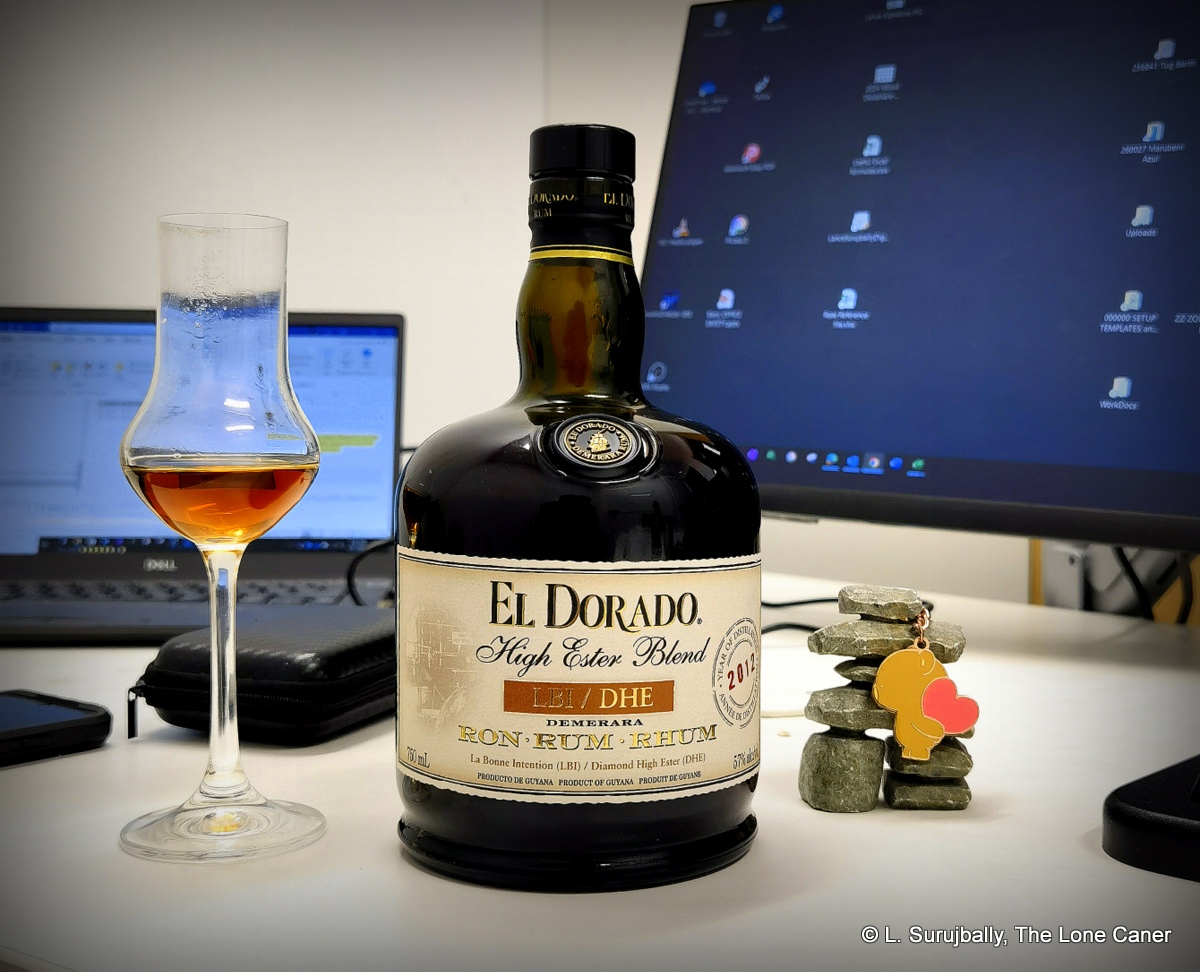
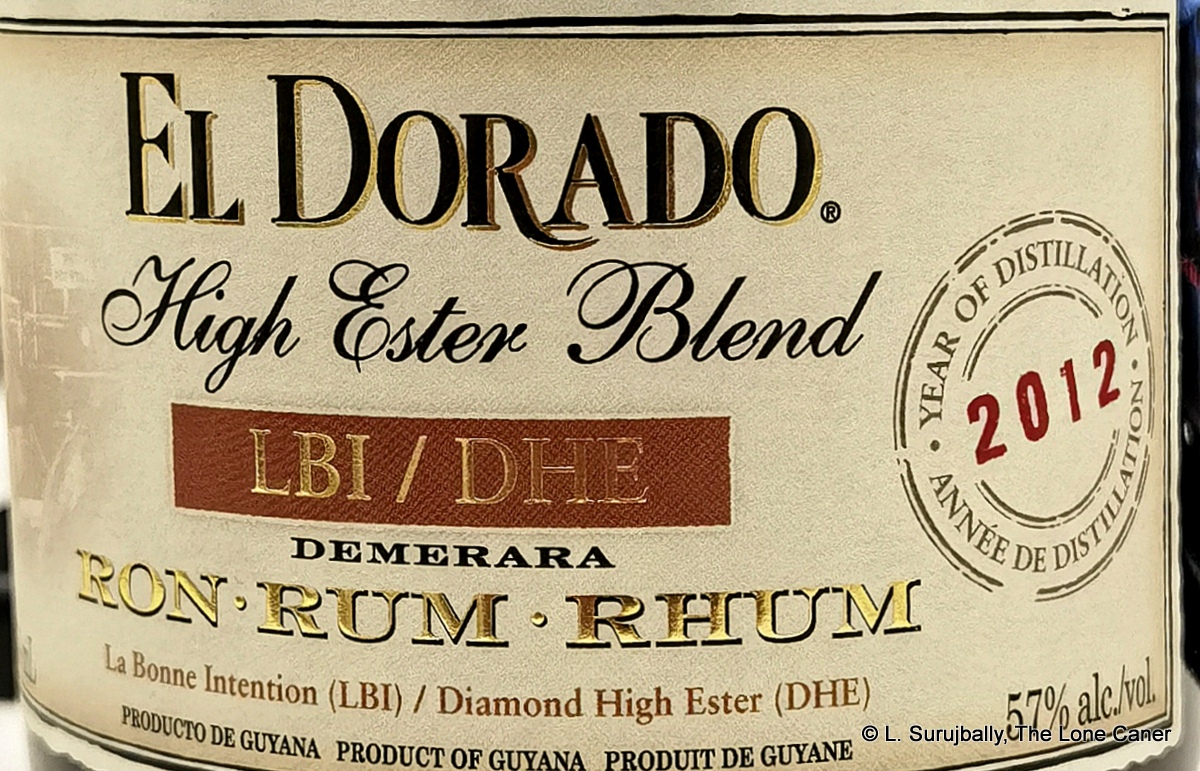
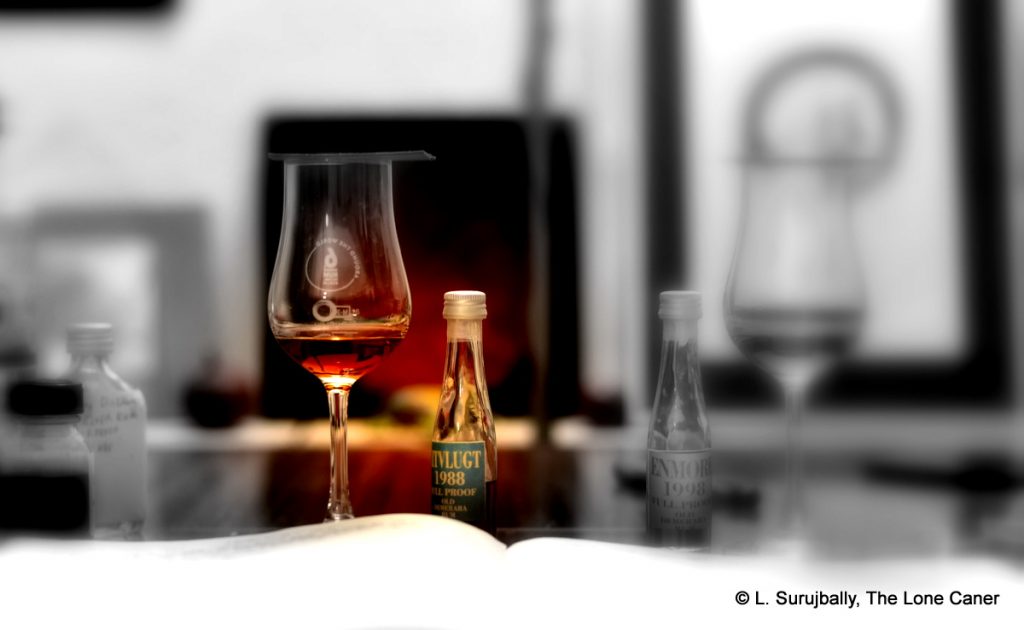
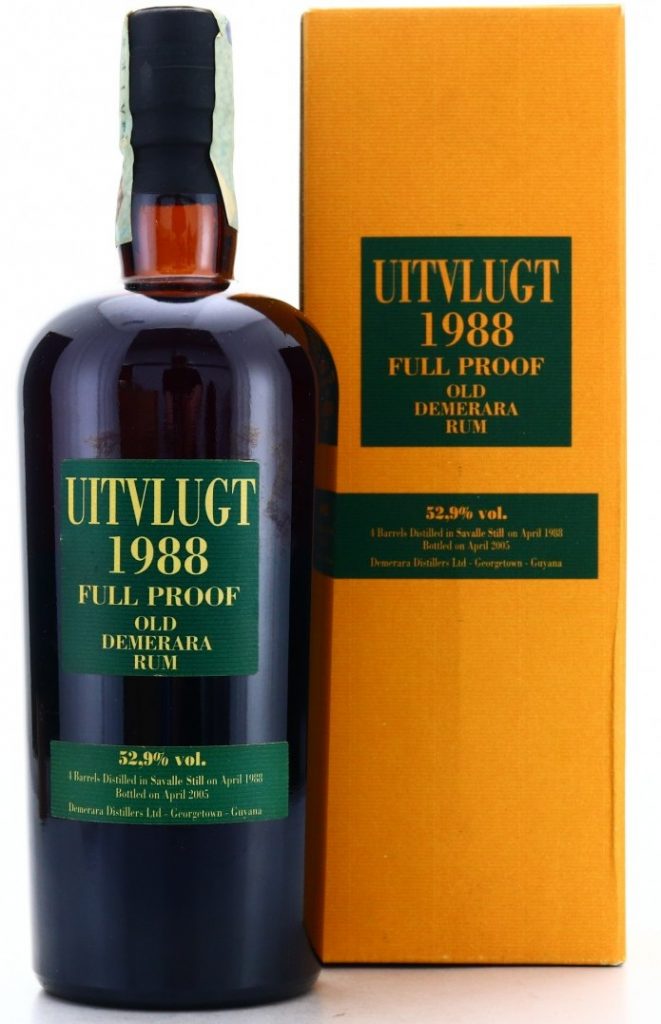
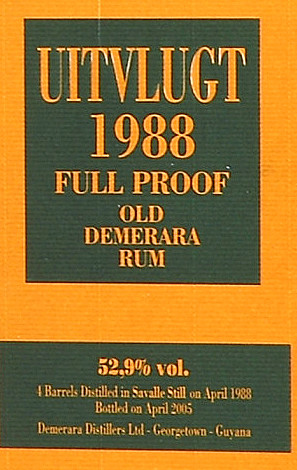
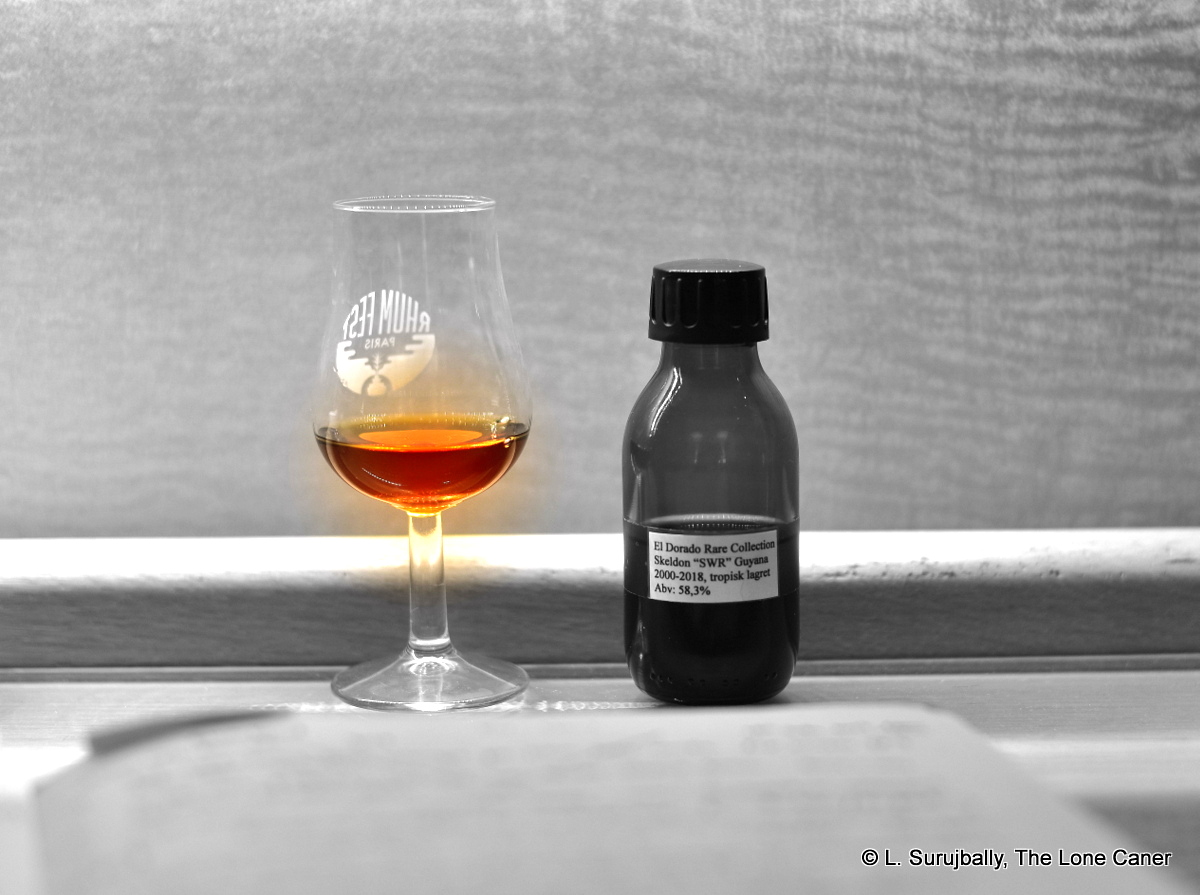
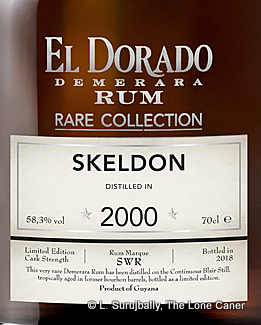 Its standout aspect was how smooth it came across when tasted. As with the Albion we looked at before, the rum didn’t profile like anywhere near its true strength, was warm and firm and tasty, trending a bit towards being over-oaked and ever-so-slightly too tannic. But those powerful notes of unsweetened cooking chocolate, creme brulee, caramel, dulce de leche, molasses and cumin mitigated the wooden bite and provided a solid counterpoint into which subtler marzipan and mint-chocolate hints could be occasionally noticed, flitting quietly in and out. The finish continued these aspects while gradually fading out, and with some patience and concentration, port-flavoured tobacco, brown sugar and cumin could be discerned.
Its standout aspect was how smooth it came across when tasted. As with the Albion we looked at before, the rum didn’t profile like anywhere near its true strength, was warm and firm and tasty, trending a bit towards being over-oaked and ever-so-slightly too tannic. But those powerful notes of unsweetened cooking chocolate, creme brulee, caramel, dulce de leche, molasses and cumin mitigated the wooden bite and provided a solid counterpoint into which subtler marzipan and mint-chocolate hints could be occasionally noticed, flitting quietly in and out. The finish continued these aspects while gradually fading out, and with some patience and concentration, port-flavoured tobacco, brown sugar and cumin could be discerned.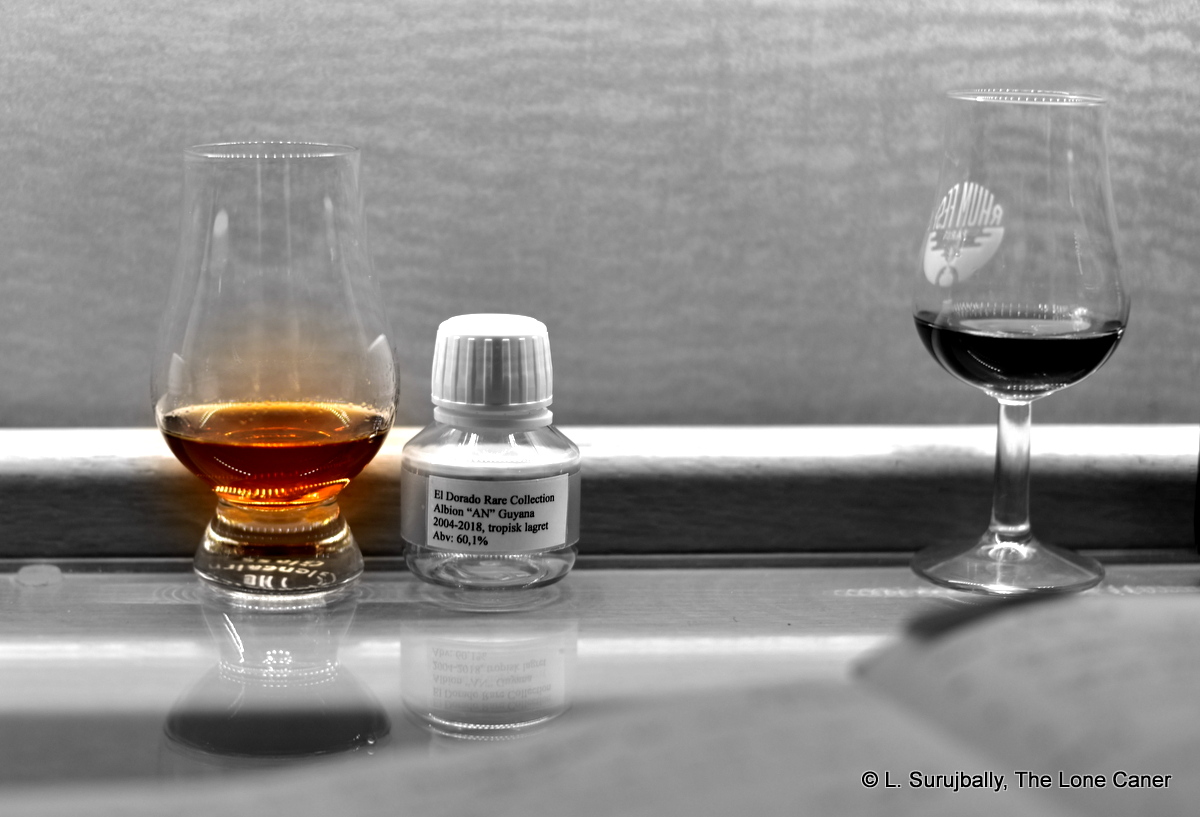
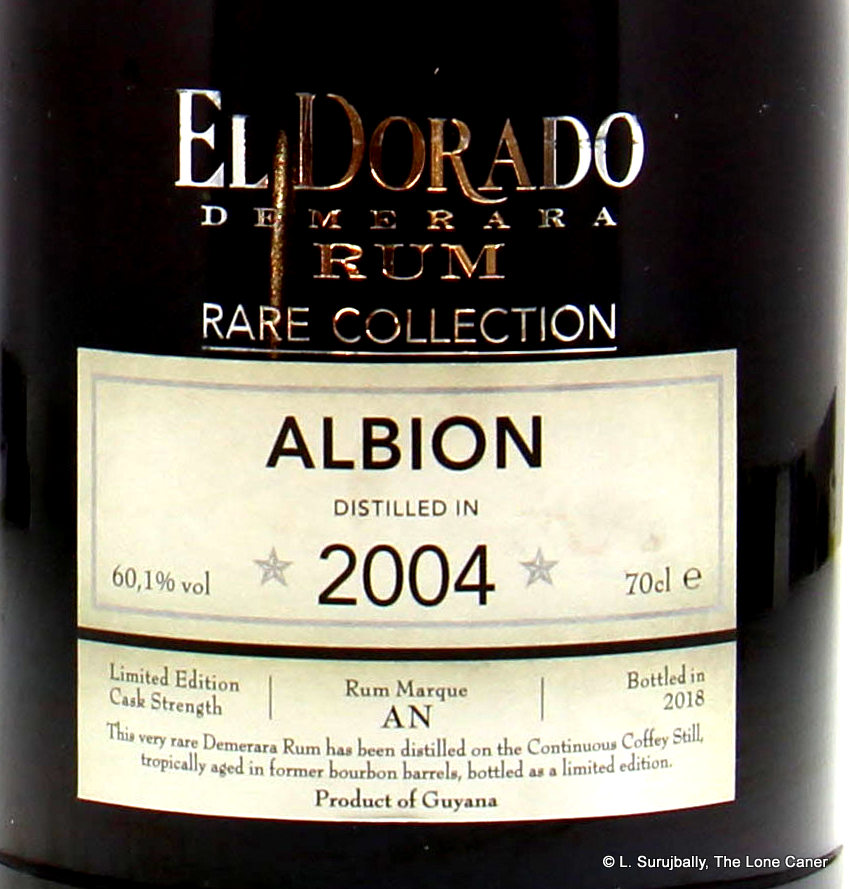
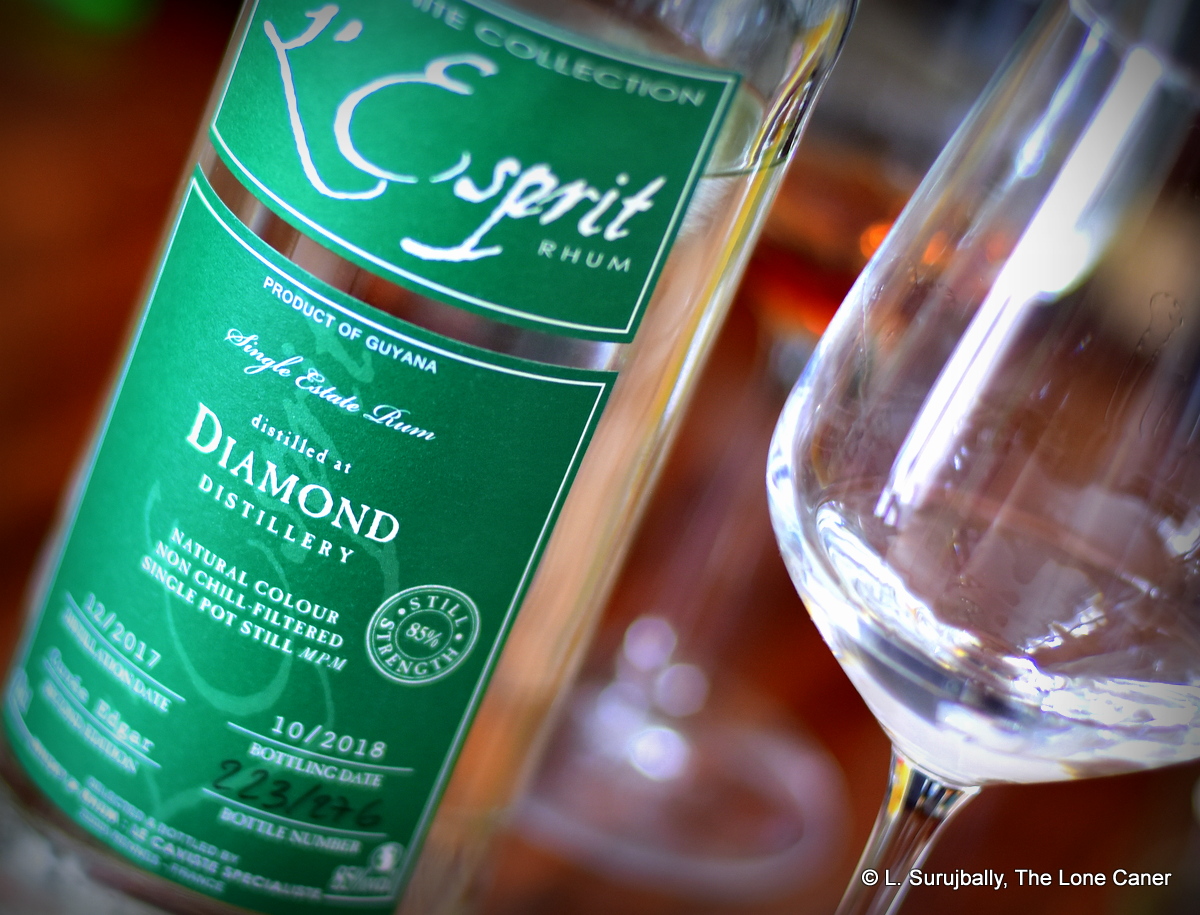
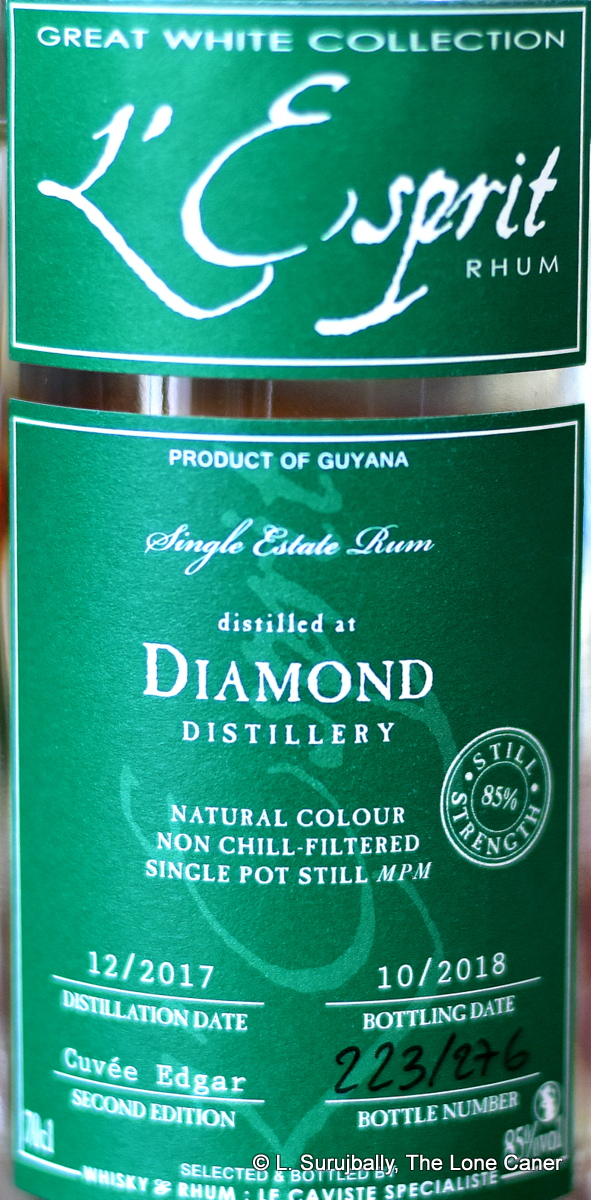 I’ll get straight to it, then, and merely mention that at 85% ABV, care was taken – I poured, covered the glass, waited, removed the cover, and prudently stepped way back.
I’ll get straight to it, then, and merely mention that at 85% ABV, care was taken – I poured, covered the glass, waited, removed the cover, and prudently stepped way back.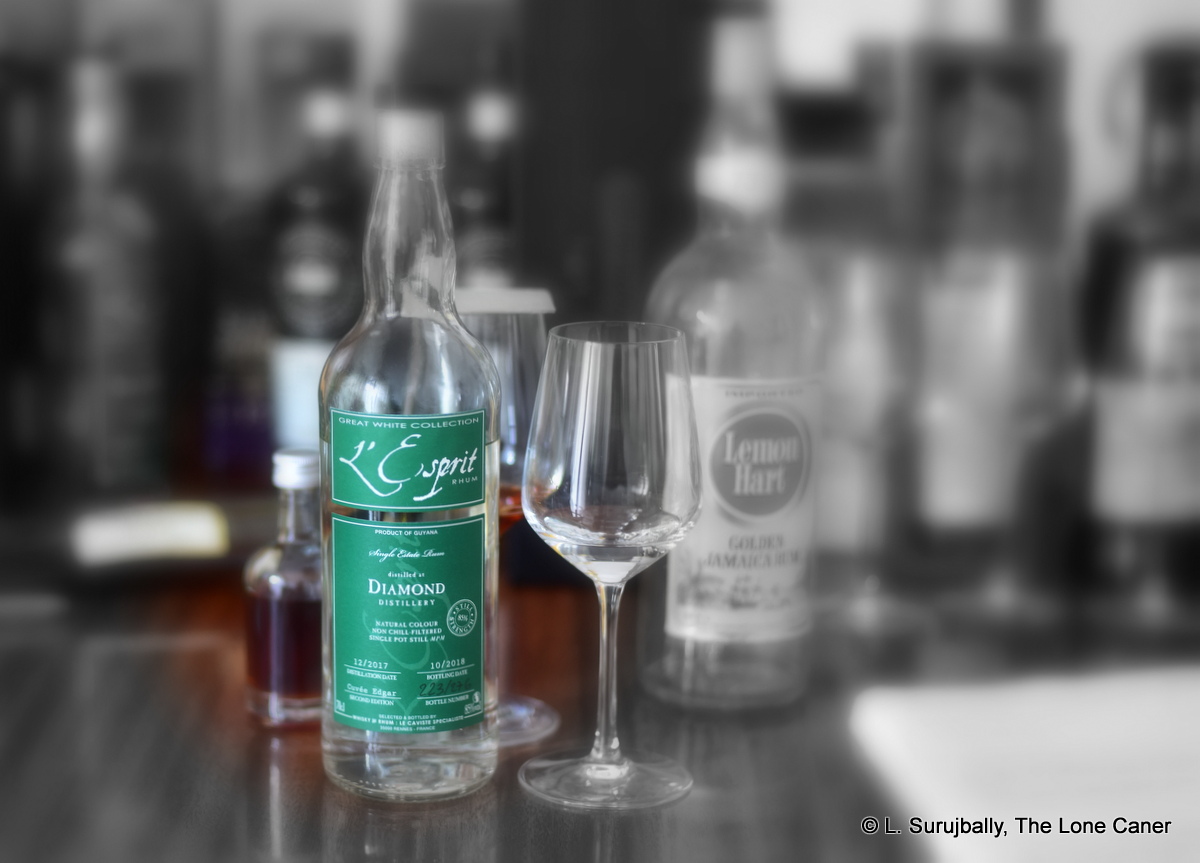
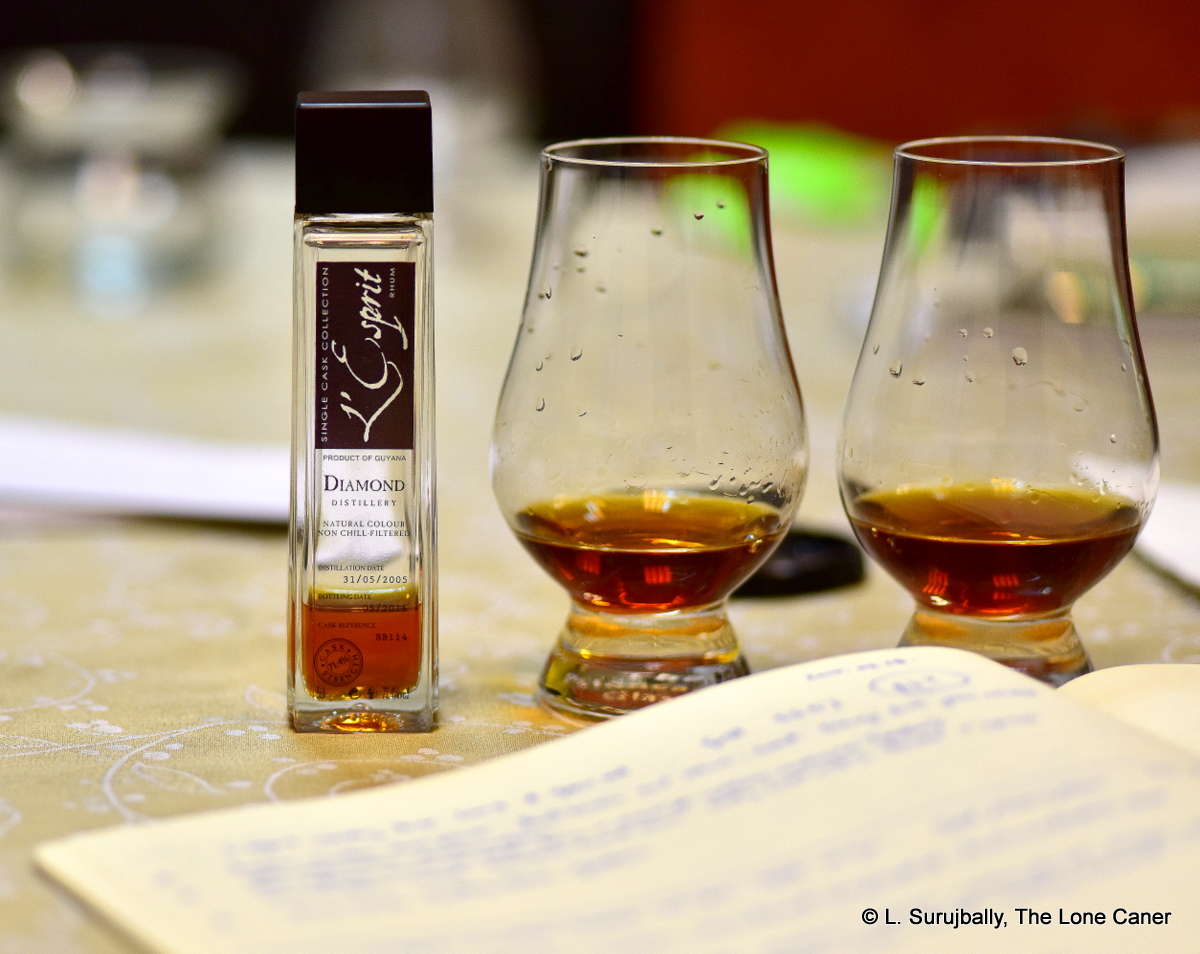
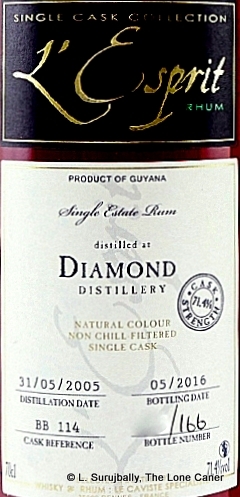 What’s all the more astounding about
What’s all the more astounding about 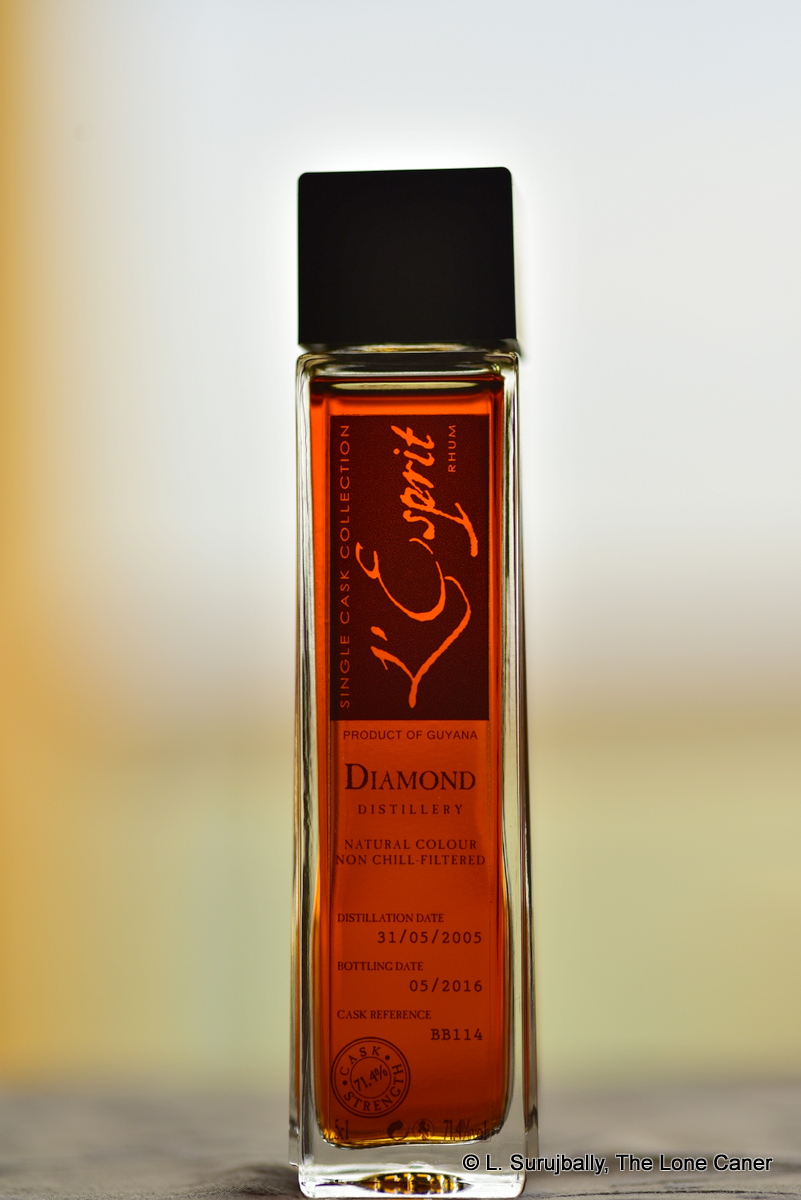 Based on how it initially nosed, I started out believing this was a wooden still — by the end, I was no longer so sure. The profile actually reminded me more of the
Based on how it initially nosed, I started out believing this was a wooden still — by the end, I was no longer so sure. The profile actually reminded me more of the 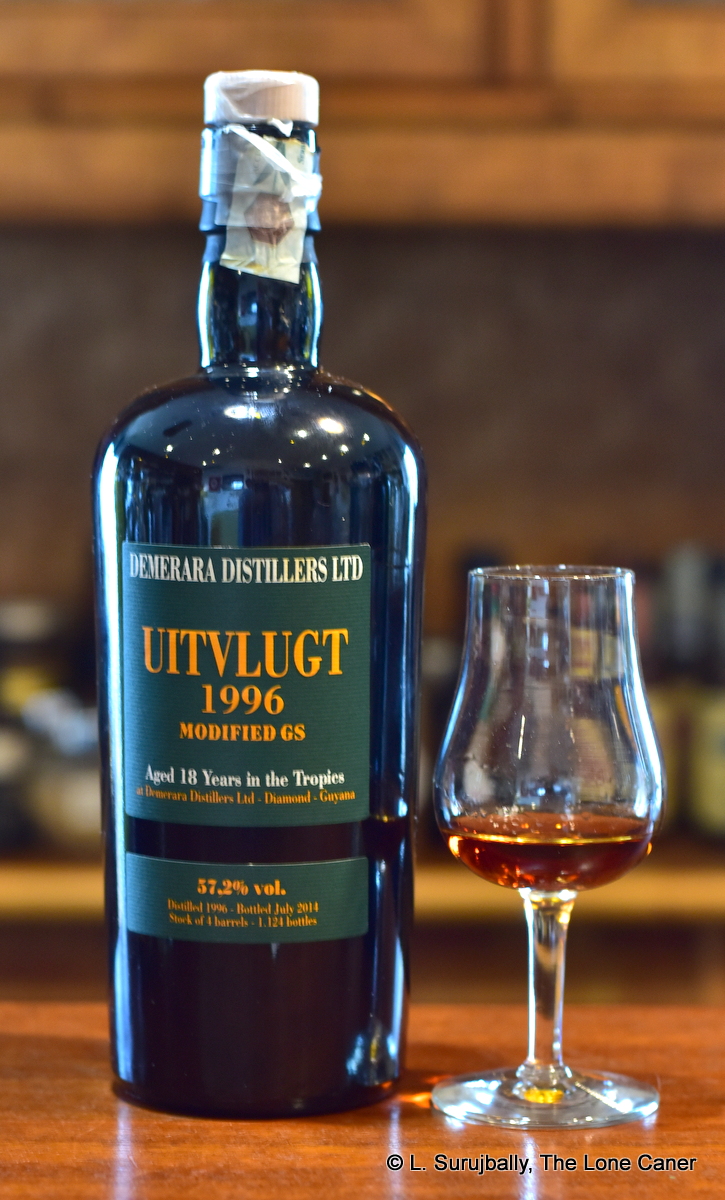 2014 was both too late and a bad year for those who started to wake up and realize that Velier’s Demerara rums were something special, because by then the positive reviews had started coming out the door, the prices began their inexorable rise, and, though we did not know it, it would mark the last issuance of any
2014 was both too late and a bad year for those who started to wake up and realize that Velier’s Demerara rums were something special, because by then the positive reviews had started coming out the door, the prices began their inexorable rise, and, though we did not know it, it would mark the last issuance of any 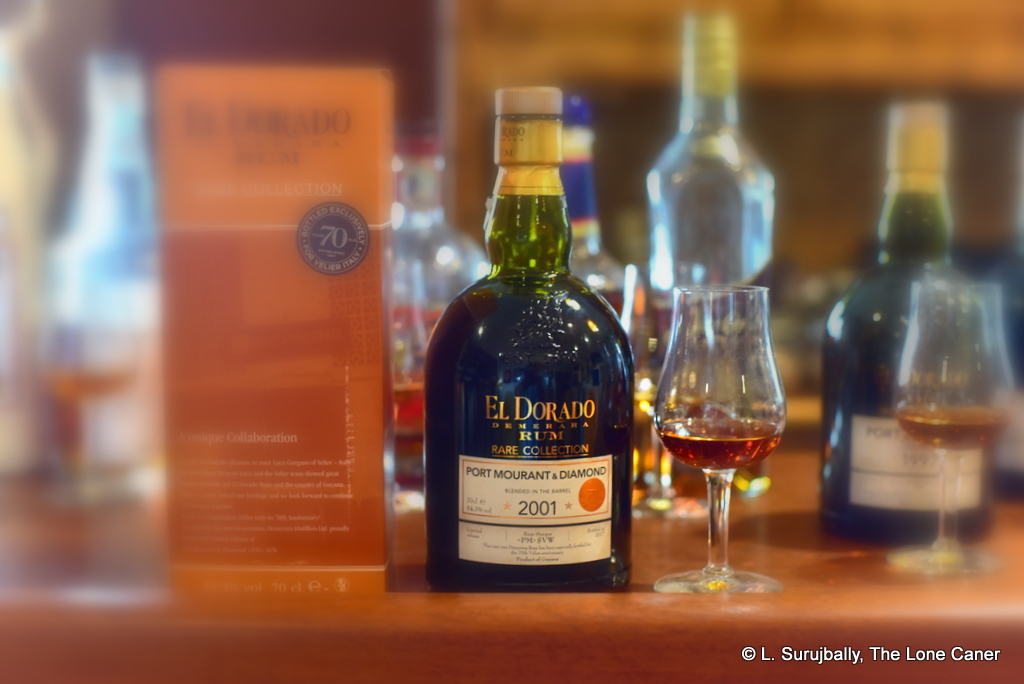
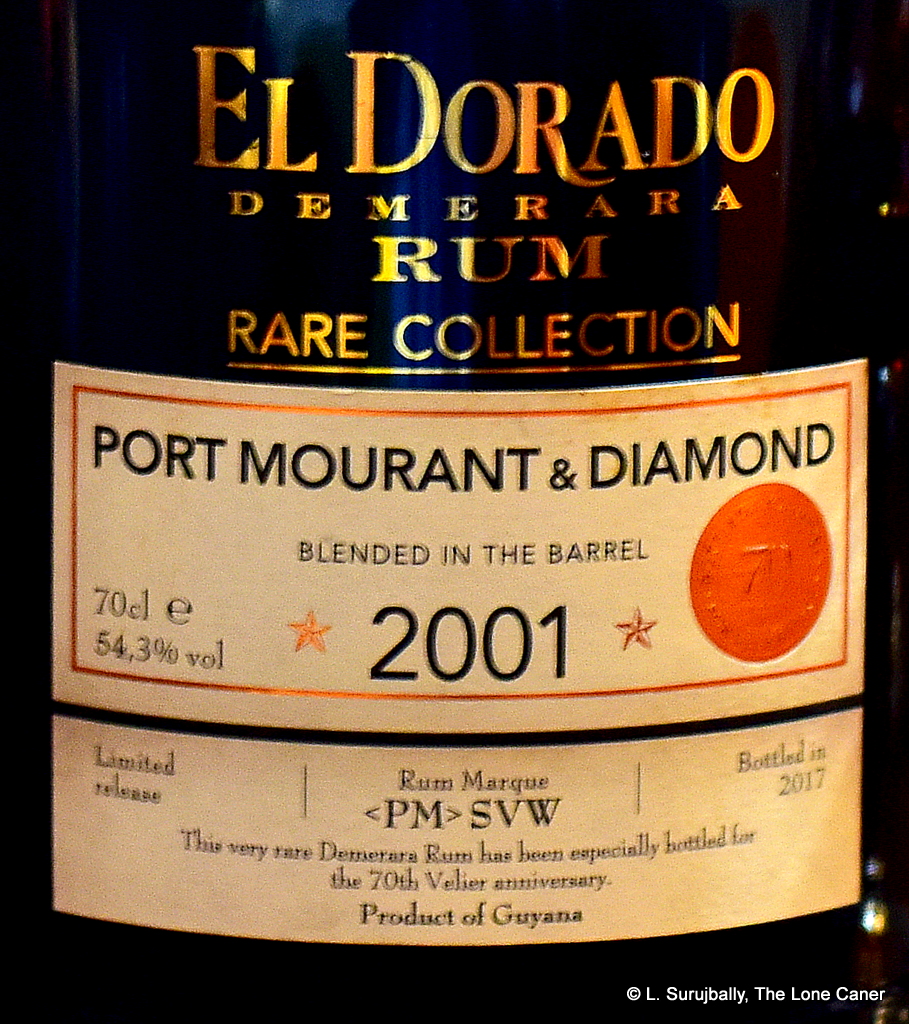 Knowing the Demerara rum profiles as well as I do, and having tried so many of them, these days I treat them all like wines from a particular chateau…or like James Bond movies: I smile fondly at the familiar, and look with interest for variations. Here that was the way to go. The nose suggested an almost woody men’s cologne: pencil shavings, some rubber and sawdust a la PM, and then the flowery notes of a bull squishing happily way in the fruit bazaar. It was sweet, fruity, dark, intense and had a bedrock of caramel, molasses, toffee, coffee, with a great background of strawberry ice cream, vanilla, licorice and ripe yellow mango slices so soft they drip juice. The balance between the two stills’ output was definitely a cut above the ordinary.
Knowing the Demerara rum profiles as well as I do, and having tried so many of them, these days I treat them all like wines from a particular chateau…or like James Bond movies: I smile fondly at the familiar, and look with interest for variations. Here that was the way to go. The nose suggested an almost woody men’s cologne: pencil shavings, some rubber and sawdust a la PM, and then the flowery notes of a bull squishing happily way in the fruit bazaar. It was sweet, fruity, dark, intense and had a bedrock of caramel, molasses, toffee, coffee, with a great background of strawberry ice cream, vanilla, licorice and ripe yellow mango slices so soft they drip juice. The balance between the two stills’ output was definitely a cut above the ordinary.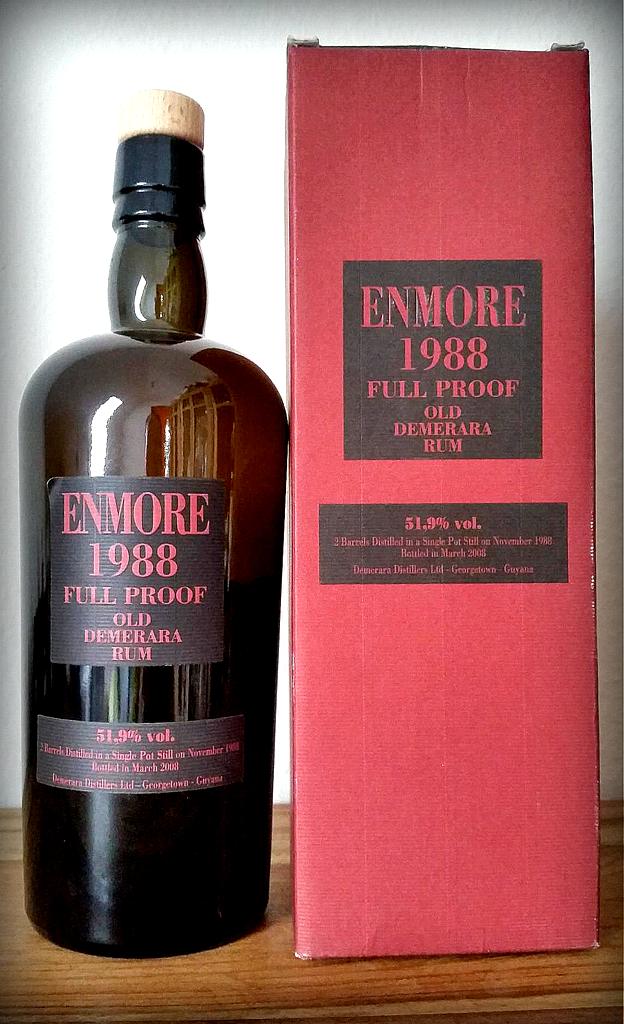
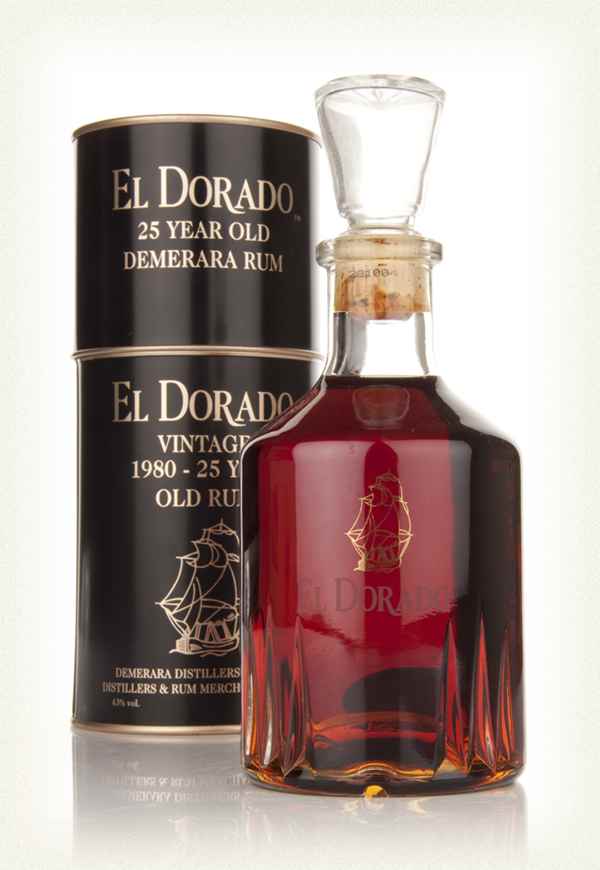
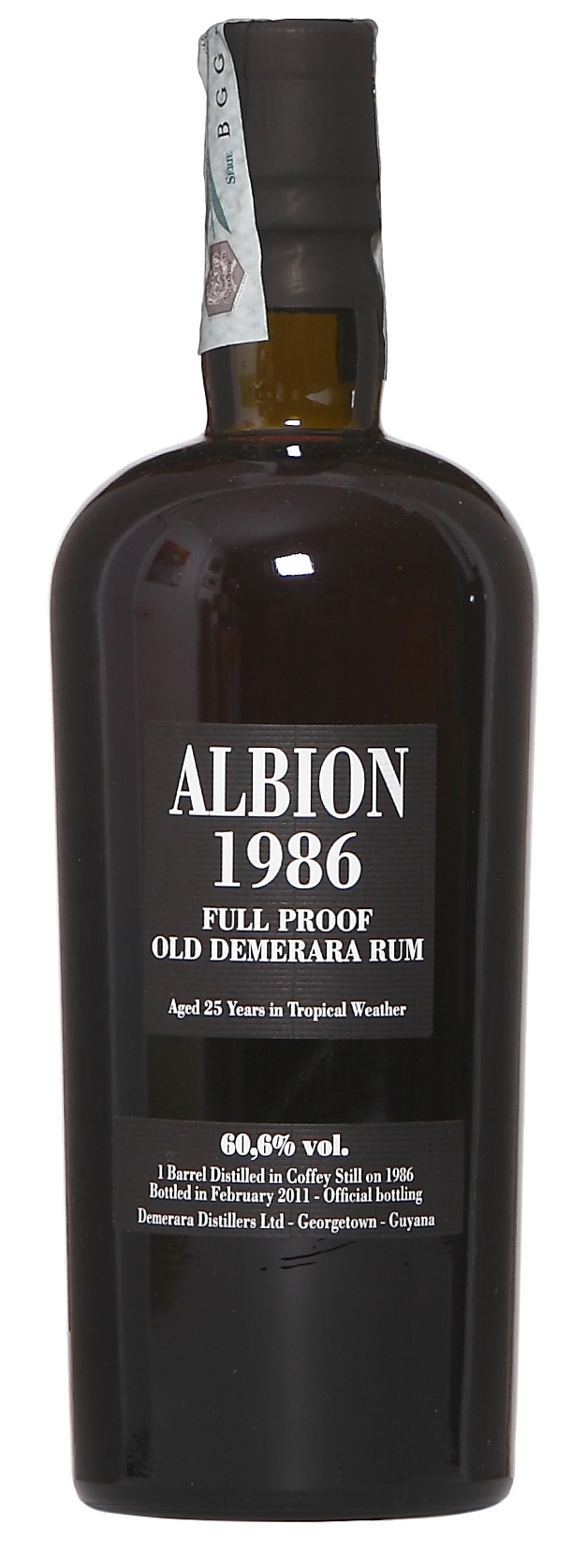 Rumaniacs Review 013 | 0413
Rumaniacs Review 013 | 0413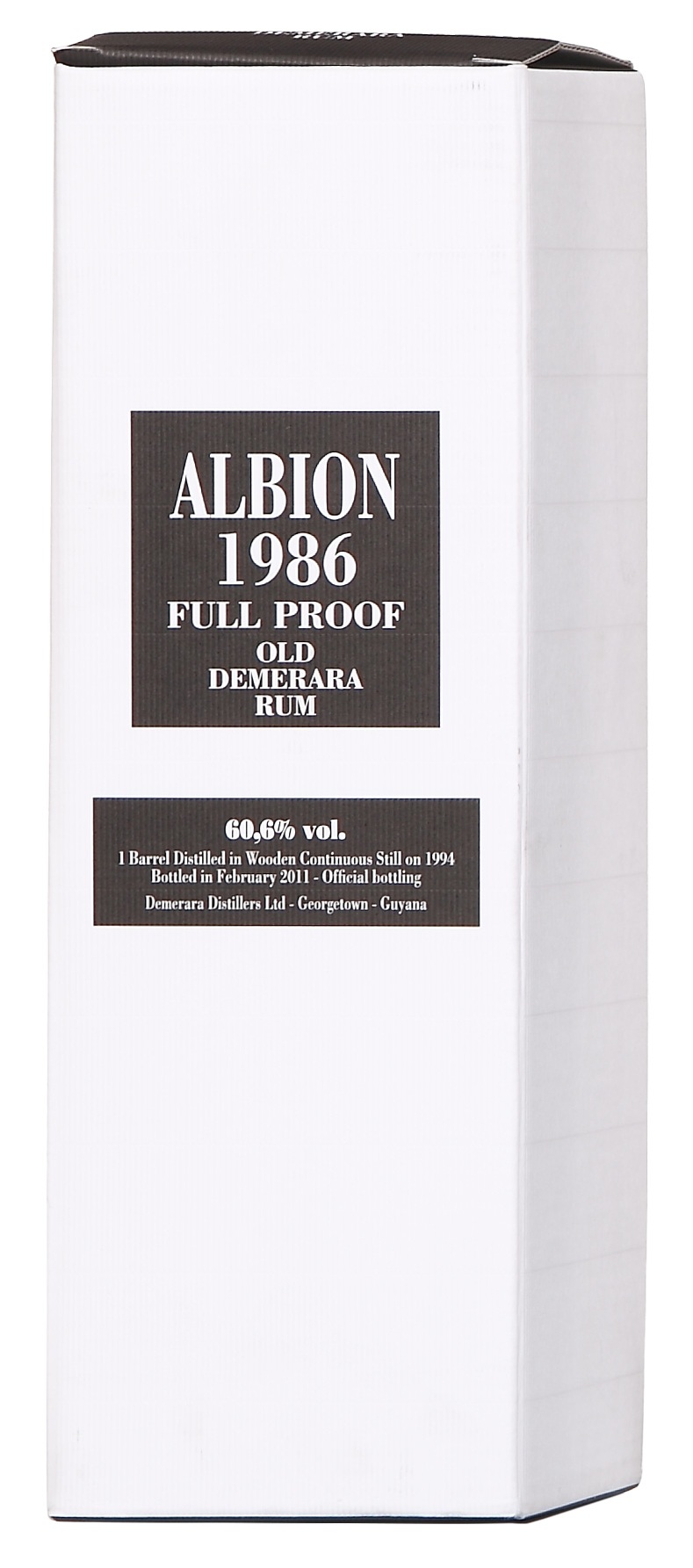

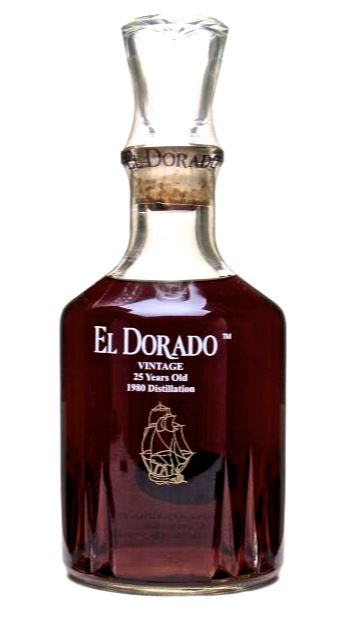 This review was written in 2010
This review was written in 2010 